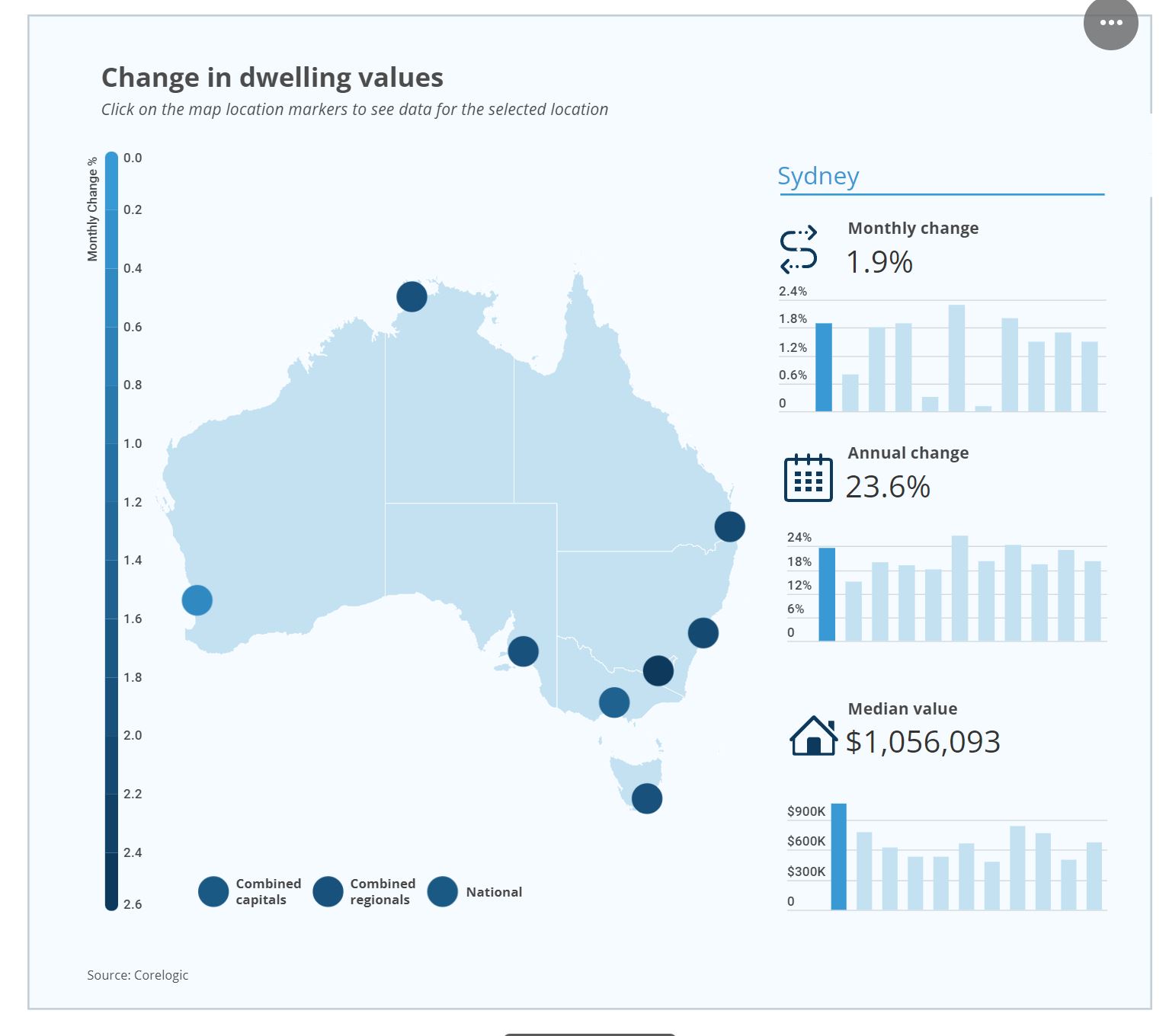Tim Lawless| Corelogic| 1 October 2021
https://www.corelogic.com.au/news/september-2021-home-value-index?utm_medium=email&utm_source=newsletter&utm_campaign=20211005_propertypulse
CoreLogic’s national home value index rose another 1.5% in September, taking Australian housing values 17.6% higher over the first nine months of the year and 20.3% higher over the past 12 months. The annual growth rate is now tracking at the fastest pace since the year ending June 1989.
The monthly change in housing values remains positive across every capital city and broad rest of state region, with Hobart (2.3%) and Canberra (2.0%) recording the largest growth, while Darwin (0.1%) and the recently revised Perth index (0.3%) recorded the softest growth conditions across the capitals.
Across regional Australia, regional NSW (2.0%), regional Tasmania (1.7%) and Regional Queensland (1.7%) led September’s capital gains.
Although growth conditions remain positive, it is becoming increasingly clear the housing market moved past its peak rate of growth in March when nationally dwelling values increased by 2.8%. Since that time, the monthly rate of growth has eased back to 1.5%.
CoreLogic’s research director, Tim Lawless, believes the slowing growth conditions are the result of higher barriers to entry for non-home owners along with fewer government incentives to enter the market.
“With housing values rising substantially faster than household incomes, raising a deposit has become more challenging for most cohorts of the market, especially first home buyers. Sydney is a prime example where the median house value is now just over $1.3 million. In order to raise a 20% deposit, the typical Sydney house buyer would need around $262,300. Existing home owners looking to upgrade, downsize or move home may be less impacted as they have had the benefit of equity that has accrued as housing values surged.
“The slowdown in first home buyers can be seen in the lending data, where the number of owner occupier first home buyer loans has fallen by -20.5% between January and July. Over the same period, the number of first home buyers taking out an investment housing loan has increased, albeit from a low base, by 45%, suggesting more first home buyers are choosing to ‘rent vest’ as a way of getting their foot in the door,” Mr Lawless continued.
Despite worsening affordability, house values are still generally rising faster than unit values; a trend that has been evident throughout most of the COVID period to-date, especially across the capital cities. Hobart and Darwin are the only capital cities where this trend has not occurred, with unit values rising 5.4 percentage points and 4.8 percentage points more than house values respectively over the past 12 months.


Recent Comments